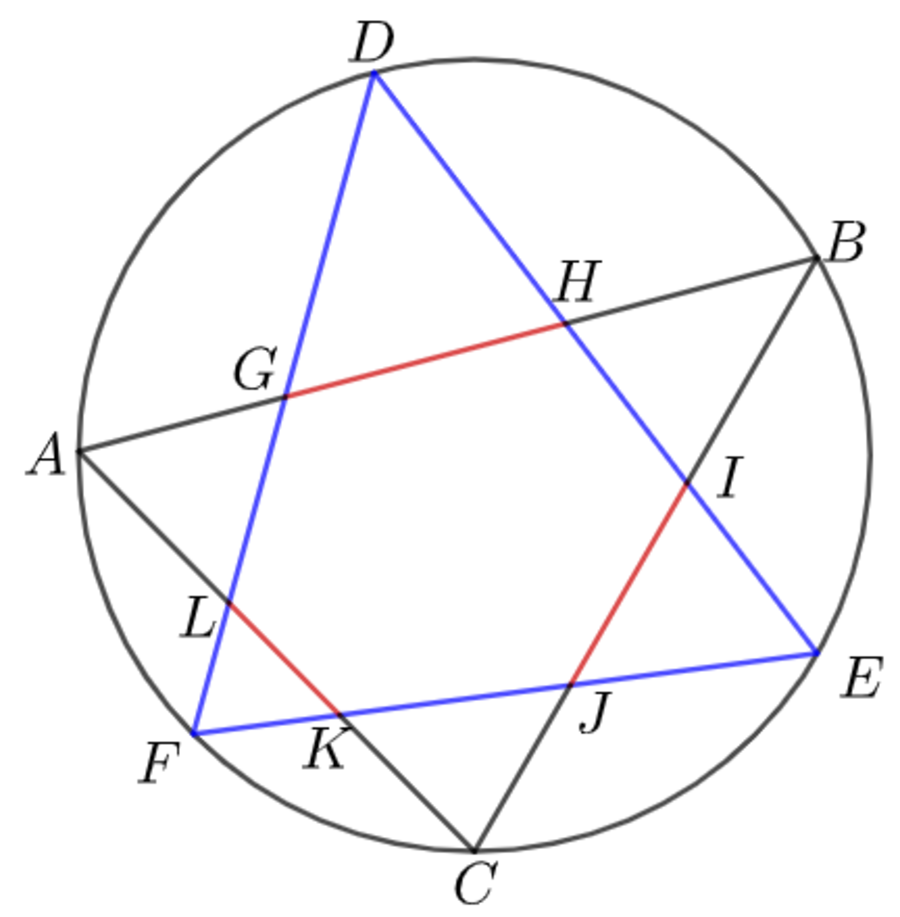Super Duper Star!

In the circumcircle, containing the nondegenerate triangle , points are the midpoints of arcs , and , respectively, which altogether form the blue triangle . The intersection points are formed. Which of the following statements below is/are true?
If is equilateral, then all red segments have congruent lengths. That is: .
If , then is equilateral.
This section requires Javascript.
You are seeing this because something didn't load right. We suggest you, (a) try
refreshing the page, (b) enabling javascript if it is disabled on your browser and,
finally, (c)
loading the
non-javascript version of this page
. We're sorry about the hassle.
1)-true- We should begin by finding the center. You have to bisect each side of ABC . Now because DEF is formed using the midpoints of the arcs made by ABC we know DEF is equilateral because if you connect the endpoints of ABC to the center the angles made are 120 degrees because of Euclid book 3 prop 20. now if we connect the endpoints of DEF to the center the angles made are half the 120 degree angles so they are 60 degrees but if you recombine them with the other 60 degrees you get an equilateral triangle
2)-true-using the diagram from number one the shape when connecting all the intersection points is a hexagon where we can prove all the sides are equal using SAS meaning that GH =IJ = KL
This is my first proof so can you give some feedback on the format and quality of the proof etc.